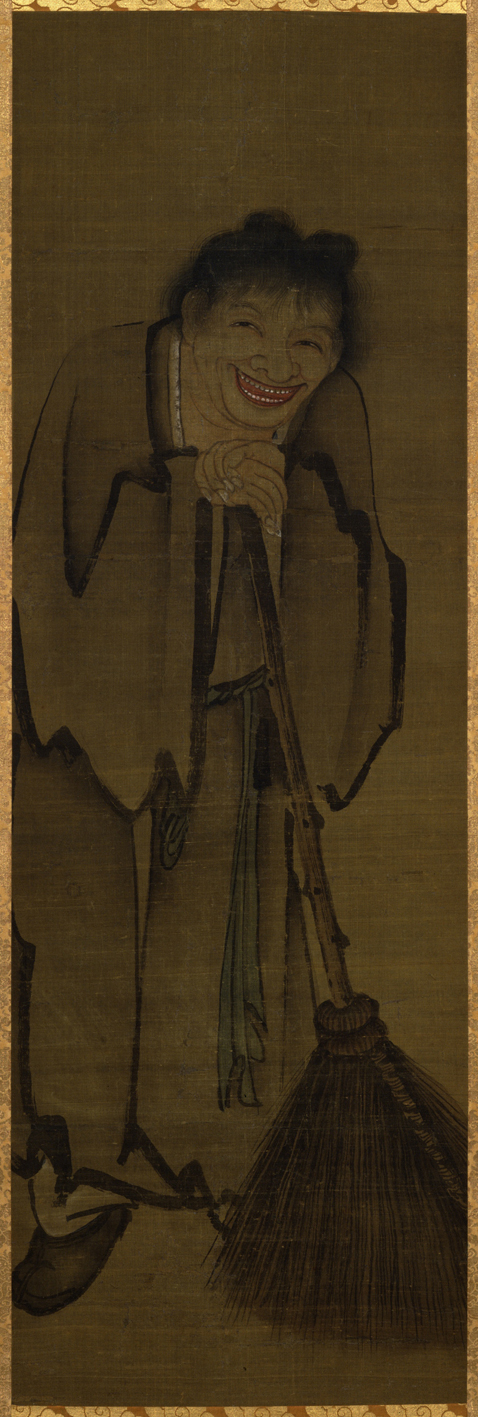|
Shide (Jittoku)
Shide may refer to: * Shide (monk), Chinese Buddhist monk and poet * Shide (Shinto), a zig-zag shaped paper streamer associated with Shinto * Shide, Isle of Wight, settlement on the Isle of Wight, England * Dalian Shide F.C. Dalian Shide was a professional Chinese football club based in Dalian, Liaoning province, China who played in China's football league system between 1955 and 2012. Their home stadiums were the 55,843 capacity Dalian People's Stadium and then late ..., a former Chinese football club * Shide Group, a Chinese building supply company that owned Dalian Shide F.C. {{disambig ... [...More Info...] [...Related Items...] OR: [Wikipedia] [Google] [Baidu] |
Shide (monk)
Shide (, fl. 9th century)Cihai lists Shide as living during the time of emperor Tai Zong who ruled from 626 to 649. See the date controversy in Hanshan article. Page 692. was a Tang Dynasty Chinese Buddhist poet at the Guoqing Temple on Mount Tiantai on the East China Sea coast; roughly contemporary with Hanshan and Fenggan, but younger than both of them. As close friends the three of them formed the "Tiantai Trio". Shide lived as a lay monk, and worked most of his life in the kitchen of Guoqing Temple. An apocryphal story relates how Shide received his name: Once, Fenggan was travelling between Guoqing Temple and the village of Tiantai, when at the redstone rock ridge called 'Red Wall' (赤城) he heard some crying. He investigated, and found a ten-year-old boy who had been abandoned by his parents; and picked him up and took him back to the temple, where the monks subsequently raised him.Cihai Page 692. Shide is referred to as Jittoku in Japanese. Poetry Shide wrote a number ... [...More Info...] [...Related Items...] OR: [Wikipedia] [Google] [Baidu] |
Shide (Shinto)
are zigzag-shaped paper streamers, often seen attached to or , and used in Shinto rituals in Japan. A popular ritual is using a , or "lightning wand", named for the zig-zag paper that adorns the wand. A similar wand, used by for purification and blessing, is the with two . A Shinto priest waves the over a person, item, or newly bought property, such as a building or a car. The wand is waved at a slow and rhythmic pace, but with a little force so that the strips make a rustling noise on each pass of the wand. For new properties, a similar ritual known as is performed with a , an enclosed part of the land (enclosed by ), and sake Sake, also spelled saké ( ; also referred to as Japanese rice wine), is an alcoholic beverage of Japanese origin made by fermenting rice that has been polished to remove the bran. Despite the name ''Japanese rice wine'', sake, and indee ..., or ritually purified sake known as . The has been used for centuries in Shinto ceremonies and ... [...More Info...] [...Related Items...] OR: [Wikipedia] [Google] [Baidu] |
Shide, Isle Of Wight
Shide is a small settlement on the Isle of Wight, some of which is considered to be in the Newport conurbation. Shide Hill House, which was demolished in the 1970s, was situated with its back towards St. George's Lane and Pan Chalk Pit with the reception rooms looking westwards across the Blackwater Road, river and railway to the open fields on the other side of the valley. It was the home and workplace of John Milne (1850–1913), inventor of the horizontal pendulum seismograph after he retired from the Imperial College of Engineering in Tokyo, Japan. Still left today is the Gatehouse to the estate at the bottom of St George's Lane and the Domestic Quarters, now known as Milne House, which were attached to the original building going up the lane. The Observatory, housed in the stable block, was dismantled and moved to Oxford in 1919 when Tone Milne returned to Japan and the estate was sold for development. However, the Laboratory Block still exists and is the building facin ... [...More Info...] [...Related Items...] OR: [Wikipedia] [Google] [Baidu] |
Dalian Shide F
Dalian () is a major sub-provincial port city in Liaoning province, People's Republic of China, and is Liaoning's second largest city (after the provincial capital Shenyang) and the third-most populous city of Northeast China. Located on the southern tip of Liaodong peninsula, it is the southernmost city in both Liaoning and the entire Northeast. Dalian borders the prefectural cities of Yingkou and Anshan to the north and Dandong to the northeast, and also shares maritime boundaries with Qinhuangdao and Huludao across the Liaodong Bay to west and northwest, Yantai and Weihai on the Shandong peninsula across the Bohai Strait to the south, and North Korea across the Korea Bay to the east. As of the 2020 census, its total population was 7,450,785 inhabitants whom 5,106,719 lived in the built-up (or metro) area made of 6 out of 7 urban districts, Pulandian District not being conurbated yet. Today a financial, shipping, and logistics center for East Asia, Dalian has a significan ... [...More Info...] [...Related Items...] OR: [Wikipedia] [Google] [Baidu] |



